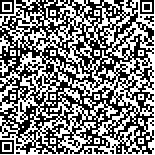| 引用本文: | 范钰,陈婷婷,陈钢,张永康.多种机器学习模型构建阿尔兹海默病失巢凋亡相关预测模型[J].生物信息学,2024,22(3):192-203. |
| FAN Yu,CHEN Tingting,CHEN Gang,ZHANG Yongkang.Construction of the anoikis-related prediction model for Alzheimersdisease based on various machine learning models[J].Chinese Journal of Bioinformatics,2024,22(3):192-203. |
|
| |
|
|
| 本文已被:浏览 1011次 下载 619次 |

码上扫一扫! |
|
|
| 多种机器学习模型构建阿尔兹海默病失巢凋亡相关预测模型 |
|
范钰1,陈婷婷2,陈钢2,张永康1,3
|
|
(1.山西医科大学 第五临床医学院, 太原 030012;2.山西医科大学 基础医学院,太原 030001;3.山西省人民医院 中医科,太原 030012)
|
|
| 摘要: |
| 阿尔兹海默病(AD)是最常见的神经退行性疾病。失巢凋亡(Anoikis)是一种新型的程序性细胞死亡方式,可导致多种疾病的发展。本研究旨在探讨失巢凋亡相关基因(ANRGs)在AD中的作用,并建立预测模型。基于GSE33000数据集筛选到1 666个AD与正常脑组织相比差异表达的基因,与53个ANRGs取交集,得到10个基因。利用上述基因,对310例AD患者进行无监督聚类,将其分为3个亚型,进一步分析不同亚型间的免疫微环境差异。之后,采用WGCNA算法筛选与AD相关的特征基因,选取4种机器学习算法(RF,GLM,SVM和XGB),构建AD罹患风险的预测模型,并在3个外部队列中进行验证(GSE5281,GSE29378,GSE122063)。最后,基于XGB模型中的5个AD特征基因(TM6SF1,SMYD3,OXCT1,MAP1B和ITPKB),成功构建一个列线图,为AD的临床预测提供参考。 |
| 关键词: 阿尔兹海默病 失巢凋亡 分子分型 机器学习 预测模型 |
| DOI:10.12113/202301003 |
| 分类号:R741.04 |
| 文献标识码:A |
| 基金项目: |
|
| Construction of the anoikis-related prediction model for Alzheimersdisease based on various machine learning models |
|
FAN Yu1, CHEN Tingting2, CHEN Gang2, ZHANG Yongkang1,3
|
|
(1.The Fifth Clinical Medical College of Shanxi Medical University, Taiyuan 030012, China;2.College of Basic Medical Sciences of Shanxi Medical University, Taiyuan 030001, China;3.Department of Traditional Chinese Medicine, Shanxi Provincial Peoples Hospital, Taiyuan 030012, China)
|
| Abstract: |
| Alzheimers disease (AD) is the most common neurodegenerative disease. Anoikis is a new type of programmed cell death that can lead to the development of many diseases. The purpose of this study is to investigate the role of anoikis-related genes (ANRGs) in AD and establish a prediction model. Based on GSE0,1 666 differentially expressed genes are screened, and 10 genes are obtained by intersection with 53 ANRGs. Using the above genes, 310 patients with AD are classified into three subtypes by unsupervised clustering, and the differences of immune microenvironment among different subtypes are further analyzed. After that, WGCNA algorithm is used to screen the characteristic genes associated with AD, and combined with four machine learning models (RF, GLM, SVM and XGB), the AD risk prediction model is constructed and verified in three external cohorts (GSE5281, GSE29378 and GSE122063). Finally, we successfully construct a nomogram based on five AD characteristic genes (TM6SF1, SMYD3, OXCT1, MAP1Band ITPKB)of the XGB model to provide reference for clinical prediction of AD. |
| Key words: Alzheimers disease Anoikis Molecular clusters Machine learning Prediction model |
|
|
|
|






